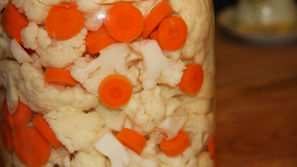Paying compound interest at Cemetery Hill
- For The Madera Tribune
- Jan 28, 2023
- 3 min read
Veterans’ Voices is directed toward veterans and their families who have given so much to ensure our freedom in this country. This is an area where you may share your experiences, or read of other veterans’ experiences. We thank you for your service, and hope that you know how much you are loved and appreciated.
They received the call at about 2 a.m., Jan. 30, 1968, while “out in the bush,” conducting ambushes.
An American artillery battery at Tuy Hoa, located on the coast of the South China Sea in Phu Yen province, had been overrun by the NVA. Paratroopers from D. Company, 4th Bn, 503rd Infantry, 173rd Airborne Bde, and attached units loaded into helicopters and landed at the Tuy Hoa North airstrip at dawn. The NVA had attacked the U.S. compound during the night because it contained a prison with a large number of Communist inmates, whom they planned to release, arm, and use to help take over Tuy Hoa. Because of Delta Company, they never got the chance.
“My troops killed all the NVA who had infiltrated the perimeter that night,” said Maj. Sgt. Anton, 4th battalions major. “I believe there were 18 killed. We piled two bodies near the wire, and the Toy Hoa villagers came out to inspect the bodes.”
Anton said the NVA would often come into villages and transcript young men into the army, and their families would never see them again. He believes the villagers were trying to identify the bodies as those of their relatives. Around noon, with the Americans firmly in control of the compound, 4th Battalion’s commander Lt. Col. Jennings, ordered an attack on the NVA entrenched in Tuy Hoa, some 1,000 yards from the airstrip. To get to the village, GIs assaulted through an old graveyard stop a slight rise. The fight would become known as the Battle of Cemetery Hill.
One paratrooper remembers the NVA were “well dug in and were everywhere, like a shooting gallery.” One popped from a hole and shot me in the chest an instant before I could shoot him,” Sgt. Benson recalled. “He kept shooting at my head. I laid still and played dead.” Benson said a young machine gunner rolled him onto his back and dragged him toward a berm. At that instant, the machine gunner was shot in the right elbow. “He kept dragging me with his left arm, and I was shot again with the bullet creasing my chin and ricocheting off my tooth,” Benson said. “I don’t know what happened to the young man who saved me. I did hear that he lost his arm, but I don’t know.”
After an initial assault, D. Company pulled back to allow air strikes on the village, which occurred around 2 a.m. An NVA soldier captured during the battle later said that “most of the battalion staff was killed or wounded by the air strikes. By 3:30, 4th Battalion’s C Company had joined the fight and was in position with D Company (counting only 44 men) for a fresh assault. Unfortunately, a short 81mm round fired by GIs hit near the D Trooper’s left flank as they waited, wounding 15 and ultimately rendering Delta Company “combat effective,” according to the after-action report. The Americans remained dug in as air strikes pounded the village during the night. The assault, planed for the morning, never occurred. NVA troops not killed or wounded by the air strikes escaped into the mountains during the night.
Two battalions from Anton, the 47th ARVN Regiment occupied the village in the morning against light opposition. As a result of the battle, 23 GIs died, eight from D Company, five from HQ Company, four from C Company, three from 3rd Bn, 319 Arty, and three of C Bath, 6th Bn, 32nd Ary. Americans killed 189 NVA and took some 30 as POWs. As Anton said in the after-action report, ”Charles NVA troops paid off with compound interest for every casualty he extracted from us.”
Any questions, email me at AboutVets@yahoo.com.
• • •
— Royal D. Goodman, U.S. Army/Vietnam,
1st Cav / 9th Infantry


























Comments